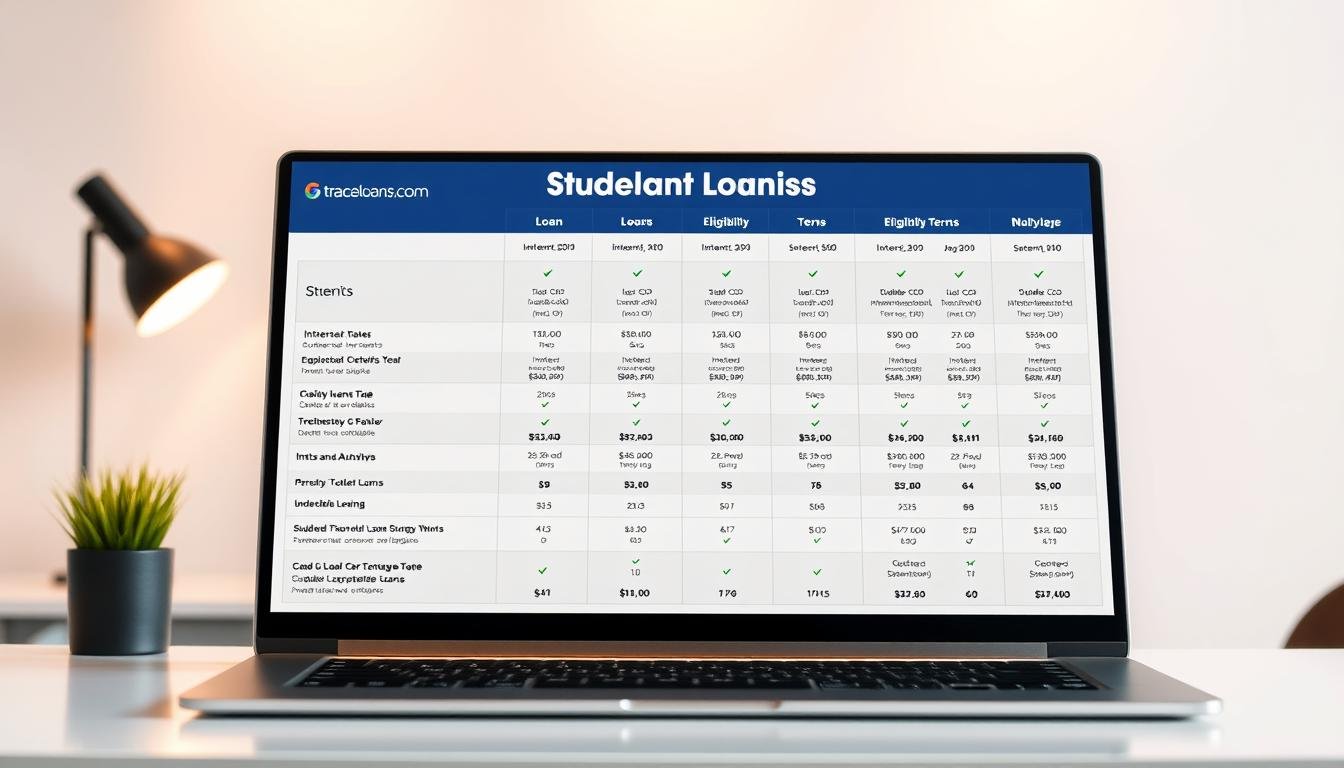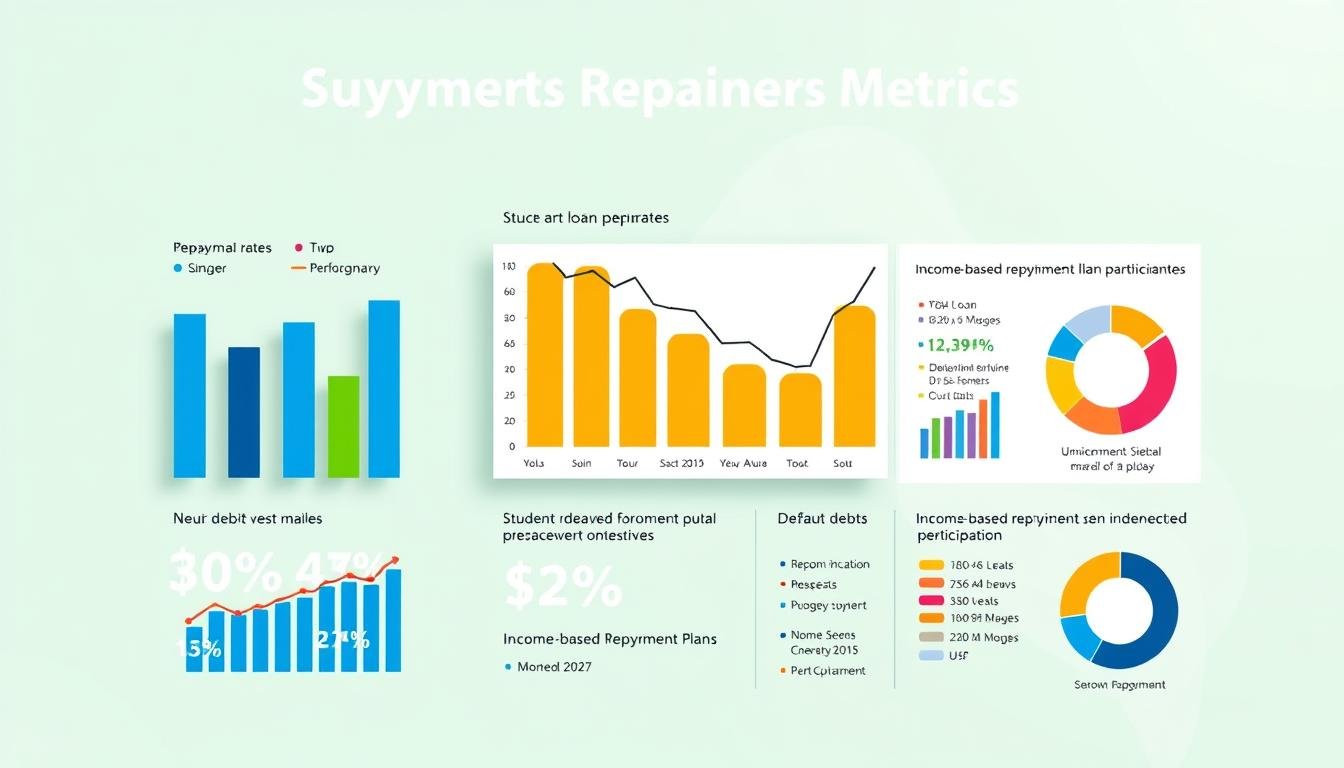Did you know the typical American homeowner saves over $3,000 a year on taxes? This is because of mortgage-related deductions. With today’s high costs, this is a lot of money many families can’t afford to miss. Are you leaving these government-approved savings untouched?
The 2017 Tax Cuts and Jobs Act changed the rules for many. It cut down on deductions and made things more confusing. Now, only 11% of people itemize their expenses, down from 31% before the change. Could your home equity line of credit qualify? Does your loan meet current IRS thresholds as outlined in Publication 936?
Many think the standard deduction is better, but maximizing tax benefits of home loan interest USA could save you a month’s rent. The trick? Decoding rules on loan amounts, property types, and repayment terms.
Key Notes
- Average annual savings exceed $3,000 for eligible homeowners
- TCJA nearly tripled standard deductions but tightened itemizing rules
- HELOC interest deductions now require strict usage documentation
- Mortgage balance limits dropped to $750,000 for post-2017 loans
- Consulting a tax professional maximizes write-offs while avoiding audits
Understanding Mortgage Interest Deduction Basics
Learning about mortgage interest deductions is key. The IRS lets you deduct interest on qualified home loans. But, only certain payments qualify. We’ll cover the basics to help you save money and follow the rules.
What Qualifies as Tax-Deductible Interest
The IRS says you can deduct interest on loans for buying, building, or improving your home. Here’s what usually counts:
- Primary mortgages: Interest on loans up to $750,000 (or $375,000 if married filing separately)
- HELOCs: Funds for big home changes, like kitchen updates
- Refinanced debt: For home improvements and within original loan limits
For instance, a $300,000 mortgage on your main home is deductible. A $50,000 HELOC for kitchen updates also qualifies. But, interest on loans for personal expenses or rental properties doesn’t count.
Key IRS Definitions from Publication 936
IRS Publication 936 explains two main debt types:
| Acquisition Debt | Home Equity Debt |
|---|---|
| Used to buy/build/improve a home | Used for any purpose |
| Up to $750,000 limit | Up to $100,000 limit |
| Full interest deduction | Deduction only if funds improve property |
A $50,000 HELOC for a bathroom addition is acquisition debt if the total is under $750,000. But, using the same HELOC for a car purchase is not deductible as home equity debt.
IRS Eligibility Criteria for Home Loan Interest Deductions
To get tax benefits for your mortgage, your home must meet IRS rules. These rules are different for your main home and vacation homes. There are specific debt limits for deductions. Here are the key things every homeowner needs to check before filing.
Property Types That Qualify for Deductions
The IRS has two types of homes that qualify:
- Primary residences must be your main home for most of the year. They need basic things like a place to sleep, cook, and a toilet.
- Secondary homes like vacation homes qualify if you use them for at least 14 days a year. Or 10% of the time if rented out.
Condominiums and mobile homes are okay if they are fixed to land. But, rental properties have different rules. You can only deduct interest based on how much you use them.
Debt Caps and Spending Rules
There are limits on how much mortgage debt you can deduct:
| Filing Status | Max Deductible Debt | Effective Date |
|---|---|---|
| Single/Married Filing Jointly | $750,000 | Post-December 15, 2017 |
| Married Filing Separately | $375,000 | Post-December 15, 2017 |
Home equity loans and HELOCs have stricter rules. To deduct tax deductible home equity loans, you must use the money to improve your home. For example, a kitchen remodel is okay, but not paying off other debts.
The IRS checks how you use the loan money. They look at settlement statements and invoices from contractors.
AGI limits also affect if you can deduct. If you make too much, you might not get as much of a deduction. Always check your mortgage papers against IRS Publication 936 to make sure you qualify.
Impact of the Tax Cuts and Jobs Act (TCJA)
The 2017 Tax Cuts and Jobs Act changed how we claim mortgage interest deductions. It brought both good and bad news. These changes affect how you can deduct items, like high-value mortgages and second homes. Let’s look at what changed and how it affects your taxes.
Pre-2018 vs Post-2018 Rules Comparison
Before TCJA, you could deduct interest on up to $1 million in mortgage debt for homes. After 2018, this limit dropped to $750,000 for new loans. Here’s what changed:
| Category | Pre-TCJA | Post-TCJA |
|---|---|---|
| Mortgage Debt Limit | $1 million | $750,000 |
| HELOC Deductions | Allowed for any purpose | Only for home improvements |
| SALT Deductions | Unlimited state/local taxes | Capped at $10,000 |
| Points Deduction | Fully deductible upfront | Amortized over loan life* |
*Exception: Points on primary home purchases remain fully deductible in year paid (IRS Notice 2018-32)
New Limitations on Deductible Interest
TCJA brought three big changes to itemized deductions:
- Lower debt ceilings: Interest deduction applies only to first $750k of mortgage debt ($375k if married filing separately)
- HELOC restrictions: Home equity loan interest deductible only if used for substantial home improvements
- SALT cap interaction: The $10,000 limit on state/local tax deductions reduces overall itemization benefits
For example, a family with a $1.2 million mortgage can now deduct interest on just 62.5% of their loan. This, along with the SALT cap, might make itemizing less beneficial than taking the standard deduction.
“The TCJA’s mortgage changes require homeowners to recalculate their break-even point for itemizing annually.”
To get the most out of deductions now:
- Keep track of home improvement costs for HELOC qualification
- Think about refinancing before 2025 sunset provisions
- Get advice from a tax expert for mixed-use properties
How to Calculate Your Mortgage Interest Deduction

To figure out your mortgage interest deduction, you need to know your adjusted gross income (AGI). You also need to follow IRS rules. This helps you save on taxes. Let’s look at how to do it step by step.
Determining Your Adjusted Gross Income (AGI)
Your AGI is the base for your deductions. Look at line 11 on your Form 1040. This line shows your total AGI after adjustments. The IRS limits deductions for those making over $109,000 if single or $218,000 if married (2023 limits).
For example, a married couple with $250,000 AGI might see their $20,000 mortgage interest deduction cut by 20%. This leaves $16,000 as their deduction.
Calculating Allowable Deduction Amounts
Here’s a simple formula to find your savings:
- Multiply your mortgage interest by your tax rate
- Subtract any phase-out based on your AGI
- Use the result to lower your taxable income
Let’s say you’re in the 24% tax bracket:
$15,000 interest × 24% rate = $3,600 savings
After 10% phase-out reduction: $3,600 – $360 = $3,240 net benefit
For mixed-use HELOCs, use IRS Worksheet 936-B to figure out deductible interest. Keep track of:
- Loan purpose (home improvement vs personal use)
- Outstanding debt balance relative to home value
- Dates of borrowing and repayment
Remember, deductions only apply to the first $750,000 of mortgage debt. If married filing separately, it’s $375,000. Always check your work against IRS Publication 936 to avoid mistakes.
Step-by-Step Process to Claim Your Deduction
To claim your IRS home mortgage interest deduction, follow three steps. These steps need precision and organization. They help you follow IRS rules and save on taxes. Let’s make this process easy to understand.
Gathering Required Documentation
First, gather these important documents:
- Form 1098 from your lender (shows annual interest paid)
- Closing disclosure from your mortgage origination
- Receipts for home improvement projects (required for HELOC deductions)
- Payment records for mortgage points or origination fees
- HELOC usage logs showing funds used for qualifying expenses
The IRS wants you to keep records for three years after filing. If you’re self-employed, you need more documents. This includes square footage and business use percentages for home office deductions.
| HELOC Use Case | Documentation Required | IRS Reference |
|---|---|---|
| Home Improvements | Contractor invoices, permits | Pub. 530 Section 4 |
| Debt Consolidation | Loan payoff statements | Form 1098-C |
| Medical Expenses | Itemized bills, insurance EOBs | Schedule A Line 4 |
Completing Schedule A (Form 1040)
Here’s how to itemize deductions:
- Enter total mortgage interest from Form 1098 on line 8a
- List deductible points on line 8b
- Add qualified HELOC interest on line 8c
Pro Tip: The IRS only lets you deduct up to $750,000 of mortgage debt. If you’re married and filing separately, it’s $375,000. Attach all Form 1098 copies to your return.
Filing Considerations for Special Cases
Some cases need extra care:
- Rental Properties: Use Form 8829 to split interest between personal and rental use
- Multi-State Filings: Some states have different rules for mortgage interest deductions
- Refinanced Loans: Only deduct interest on debt used for buying, building, or improving your home
For home offices, deduct the business-use percentage of mortgage interest on Form 8829. Always check IRS Publication 530 for complex returns.
Case Studies: Real-World Tax Savings Scenarios

Learning about AGI limits and mortgage interest deductions is easier with real examples. These stories show how income and filing status impact tax savings on home mortgage interest. They help homeowners guess how much they might save based on their own situations.
Single Filer Example: $150k AGI
A single homeowner with a $150,000 income pays $12,000 in mortgage interest each year. They fall into the 22% tax bracket in 2023. By itemizing, they cut their taxable income by $12,000, saving $2,640 in taxes.
This is more than the $13,850 standard deduction for singles. So, itemizing is the better choice for them.
Married Couple Example: $250k Joint AGI
Married homeowners with a $250,000 income and $24,000 in mortgage interest are in the 24% tax bracket. Itemizing deductions lowers their taxable income by $24,000, saving them $5,760 in taxes.
This is more than the $27,700 standard deduction for married couples. So, itemizing is the better choice for them.
High-Income Household: $500k AGI
A household with a $500,000 income pays $30,000 in mortgage interest. But, they can only deduct $15,000 because of TCJA phase-outs. At their 35% tax rate, they save $5,250 in taxes.
This is less than what lower-income filers save, even with higher interest payments.
| Scenario | AGI | Deductible Interest | Tax Savings |
|---|---|---|---|
| Single Filer | $150,000 | $12,000 | $2,640 |
| Married Couple | $250,000 | $24,000 | $5,760 |
| High-Income | $500,000 | $15,000 | $5,250 |
Pro Tip: Think about a bunching strategy if your deductions are close to the standard deduction. Alternate between itemizing mortgage interest in high-expense years and claiming the standard deduction in others. This way, you can save more over time while following IRS rules.
Itemizing vs Standard Deduction Post-TCJA
The Tax Cuts and Jobs Act changed how we think about deductions. Homeowners now face a yearly choice: go for simplicity or try to save more. Let’s look at how to make the best choice with today’s rules and smart timing.
2023 Standard Deduction Amounts
Here are the IRS’s current numbers to help you decide:
| Filing Status | Standard Deduction | Age 65+ Bonus |
|---|---|---|
| Single | $13,850 | $1,850 |
| Married Filing Jointly | $27,700 | $1,500 per spouse |
| Head of Household | $20,800 | $1,850 |
These numbers are almost double what they were before. This makes itemizing less common. But, if you have a lot of mortgage interest or property taxes, itemizing might be better.
Break-Even Analysis for Itemization
Here’s a simple way to figure out if itemizing is right for you:
(Mortgage Interest + SALT + Charity) > Standard Deduction
Let’s say a married couple has:
- $18,000 in mortgage interest
- $5,200 in state taxes
- $2,100 in charitable gifts
They have a total of $25,300 in deductions. But, the standard deduction is $27,700. They need another $2,400 in expenses to itemize. They can get this by:
- Prepaying property taxes
- Bunching charitable donations
- Timing medical expenses
Alternating Year Strategies
Biennial bunching is a smart way to beat the deduction limits. Here’s how it works:
| Year 1 | Year 2 | Benefit |
|---|---|---|
| Pay 2 years of charity | Skip donations | Exceed standard deduction |
| Schedule major dental work | Delay procedures | Claim medical expenses |
This method needs careful planning with insurance and timing. For example, doing elective medical procedures in high-income years can help save more. This way, you can manage your AGI better.
Strategies for Maximizing Mortgage Interest Deductions
Smart homeowners can save more taxes by managing their mortgage well. They can use three key strategies to get the most from their deductions. These methods follow IRS rules.
Accelerating Mortgage Payments
Biweekly payment plans make 13 payments a year. This cuts down the principal and keeps more interest deductible in the early years. It’s great for new mortgages where interest is a big part of payments.
Optimizing Refinance Timing
Refinance when rates go down before you hit income limits that cut deductions. For 2023, married couples filing together lose some deductions at $250,000 AGI. Single filers lose at $125,000. Getting lower rates keeps more interest deductible.
Leveraging Points and Origination Fees
Spread out point deductions over your loan’s life, not all at once. For example, a $4,800 points payment on a 30-year mortgage gives $160 in deductions each year. Use tax deductible home equity loans for property improvements to get more interest deductions.
Always talk to a tax expert to make sure your plans follow IRS rules. These strategies work best when part of a long-term financial plan and income forecast.
Special Considerations for Secondary Homes and HELOCs
Homeowners with secondary homes or home equity lines of credit have special IRS rules. The Tax Cuts and Jobs Act changed some important rules. It’s key to know how these changes affect your deductions.
Vacation Property Deduction Guidelines
To get IRS home mortgage interest deduction for a vacation home, you must meet a 14-day personal use test. The property is considered a second home if:
- You use it for personal purposes ≤14 days annually
- You rent it out ≥15 days per year
Using it more than 14 days makes it a personal home. This limits what you can deduct. If you use it for both rent and personal, you must split the interest.
HELOC Tax Treatment Essentials
Interest on tax deductible home equity loans depends on how you use the money. The IRS only lets you deduct interest if you use the money to improve your home. Here’s a simple guide:
| HELOC Use Case | Deductible? | TCJA Limit |
|---|---|---|
| Roof replacement | Yes | Up to $100k* |
| Kitchen remodel | Yes | Up to $100k* |
| Credit card debt | No | N/A |
| College tuition | No | N/A |
*Combined mortgage debt cannot exceed $750k ($375k if married filing separately)
It’s important to keep records of how you used the money. Keep receipts for any repairs or upgrades. This helps prove your deductions in case of an IRS audit. For HELOCs started after December 15, 2017, using the money for anything else means you can’t deduct the interest.
Common Mistakes to Avoid When Claiming Deductions

Many homeowners don’t know they’re losing tax benefits because of mistakes. These errors include not understanding IRS rules or not keeping the right documents. We’ll look at big mistakes and how to avoid them to keep your taxes low.
Overlooking Debt Limit Reductions
The Tax Cuts and Jobs Act changed the rules for mortgage debt. Now, you can only deduct up to $750,000 for loans made after December 15, 2017. Claiming more than this is a big mistake, as IRS Publication 936 warns.
Homeowners often make these mistakes:
- Thinking old HELOC rules apply to all debt
- Not knowing about AGI phase-outs at $100k (single) or $200k (joint)
- Not tracking mixed-use home equity loans
Miscalculating Rental Property Allocations
For homes used for both living and renting, you must split the use correctly. A big mistake is using square footage without checking how often you use each area. Here’s how to split it right:
| Method | Personal Use | Rental Use |
|---|---|---|
| Square Footage | 40% | 60% |
| Days Used | 30 days | 90 days |
Keep detailed records of how you use your property. Check IRS rules for combining home equity loans with rental income. Having proof is key during audits, like for seasonal rentals or business use.
Future Outlook: Mortgage Tax Benefits Changes
Changes in laws might change how we get mortgage interest deductions. Homeowners need to know how these changes could affect their money plans.
2025 TCJA Provisions Sunset
The Tax Cuts and Jobs Act’s impact on housing costs is big in 2025. Important rules for homeowners will end unless lawmakers act:
| Policy Element | Pre-2018 | Current (2023) | Post-2025 Projection |
|---|---|---|---|
| Mortgage Debt Limit | $1 Million | $750,000 | $1 Million* |
| SALT Deduction Cap | Unlimited | $10,000 | Unlimited* |
| Home Equity Interest | Deductible | Restricted | Unclear |
*Pending legislative action
Proposed Legislation Analysis
Three bills could change how we get tax breaks for owning homes:
- HR 2167: Wants to keep the $1 million mortgage debt limit forever
- S. 912: Wants to remove SALT cap for those making under $400k
- HELOC Fairness Act: Wants to let us deduct home improvement loans again
Financial advisors suggest these plans:
- Look into adjustable-rate mortgages before 2025
- Pay off HELOCs fast if interest rates go up
- Talk to tax experts about planning for years
Conclusion
Homeowners can get the most from home loan interest tax benefits in the USA. They should keep detailed records of home improvements. This helps prove mortgage debt.
They should also check if itemizing is better each year. Use IRS Publication 936 to guide them. Remember, the standard deduction for 2023 is $13,850 for singles and $27,700 for joint filers.
Keep an eye on tax law changes. The Tax Cuts and Jobs Act (TCJA) rules will end in 2025. This might change the $750,000 mortgage debt limit.
For those with canceled mortgage debt or HELOC balances over $100,000, IRS Form 982 is key. It’s needed for reporting.
Talk to tax pros at places like H&R Block or TurboTax Live. They can make a plan for you. This plan will include mortgage interest and property tax write-offs.
Have a yearly review in November. This keeps your finances in line with tax code changes. Use IRS Free File tools to compare deductions before the year ends.
Get Form 1098 from lenders like Rocket Mortgage or Wells Fargo by January 31. This form shows deductible interest. If you have rental properties or second homes, talk to Enrolled Agents who know real estate tax.
Following these steps can save you money. And you’ll stay in line with IRS rules.
FAQ
What types of home loan interest qualify for tax deductions in the USA?
You can deduct interest on primary mortgages up to $750,000. This includes home equity loans for big home improvements. But, loans for vacations or investment properties don’t qualify.
How does the Tax Cuts and Jobs Act affect HELOC deductions?
The TCJA changed rules for HELOC deductions. Now, you can only deduct interest for home improvements. A $50k HELOC for a kitchen remodel is deductible, but not for paying off credit card debt.
Can I deduct mortgage interest on a vacation home?
Yes, if it meets IRS “qualified home” rules and you use it personally over 14 days a year. The deduction limit is $750k for all homes. Rental properties need prorated deductions based on use.
What documentation proves HELOC funds were used for home improvements?
Keep canceled checks, contractor invoices, and bank statements. These show payments to home improvement vendors. Use IRS Worksheet 936.1 for mixed-use HELOCs.
How do AGI limits impact mortgage interest deductions?
There’s no direct AGI cap, but itemized deductions phase out at high incomes. For 2023, this starts at $109,450 for singles and $218,950 for joint filers. High earners might save more by itemizing.
What happens if my mortgage exceeds the $750k TCJA limit?
You can deduct interest on the first $750k of debt. For a $1.2 million mortgage, only $30k is deductible. Use IRS Form 8598 to calculate deductions.
Are mortgage points deductible under current tax laws?
Yes, points for buying or improving your home are deductible in the year paid. Refinance points must be spread over the loan term. Document points on Form 1098 from your lender.
How does the $10k SALT cap affect mortgage interest deductions?
The SALT deduction limit combines property taxes and income/sales taxes. If your property taxes are over $10k, it reduces your deductions. Consider other deductions to exceed the standard deduction.
What are common audit triggers for mortgage interest claims?
The IRS looks closely at returns with big deductions, HELOC claims without proof, and rental property allocations. Keep records for three years after filing.
How might 2025 tax law changes impact current homeowners?
Changes could raise debt limits and expand HELOC deductibility. Watch House Bill HR 2167 for SALT cap removal. Lock in mortgages and consult a CPA to plan for changes.











